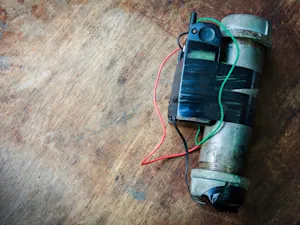Shocking! Authorities Reveal Evidence Found in Decomposing Bodies
In cases where a human body goes undiscovered for an extended period of time, forensic experts can encounter distinctive hurdles when it comes to collecting evidence and solving crimes. Despite these challenges, they can still rely on several crucial types of forensic evidence to gather valuable information about the cause of death for the discovered body, years or even decades after the person died.
Environmental Factors and Decomposition
The decomposition of a body is highly influenced by the specific environment where it is located. For instance, bodies buried in loose soil, such as sand, decompose faster. On the other hand, colder or arid conditions can result in natural mummification, preserving the body's tissues over extended periods. Further, larger bones are often preserved in aquatic environments due to the surrounding water. Still, water movement makes more minor skeletal elements more likely to be lost.
Law enforcement, medical, and forensic professionals must understand how different environments impact the decomposition process to raise awareness, solve crimes, and inform research and testing.
Methods of Identification
Identifying human remains after a long period typically involves a combination of methods, including analyzing dental records, examining bones, and extracting DNA. Teeth are instrumental in this process because they are more resistant to environmental degradation, making it possible to obtain valuable DNA samples even when other tissues have deteriorated.
In some cases, mummified remains can retain identifiable fingerprints if appropriately preserved. Furthermore, an in-depth analysis of the skeletal structure can uncover evidence of injuries such as sharp force trauma or gunshot wounds, providing crucial insights into the circumstances surrounding the individual's death.
Challenges in Toxicology
As time passes, toxicology testing becomes increasingly intricate due to the potential degradation of substances in mummified or frozen remains. While certain substances might still be detectable, the concentrations found may not accurately represent the conditions at the time of death. For instance, the detection of drugs is feasible, but assessing their impact on the cause of death becomes challenging due to the effects of decomposition.
Clothing and Trace Evidence
Clothing, often still present on long-undiscovered bodies, plays a crucial role in helping forensic scientists estimate the time of death. The fashion of the clothing or specific brands can provide valuable clues. However, natural fibers may decay, leaving only synthetic elements. Trace evidence, such as fibers or hair, can be more difficult to recover, particularly in aquatic environments or if animals have disturbed the remains.

Even after years, forensic evidence can still tell a story, offering critical insights into a person's identity and the circumstances of their death. This aspect of forensic science, where evidence speaks for those who can no longer do so, is a powerful reminder of the value of continued research and technological advancements.
References: The importance of forensic evidence for decisions on criminal guilt | What Forensic Evidence Is Available When Bodies Go Undiscovered For Years?
























